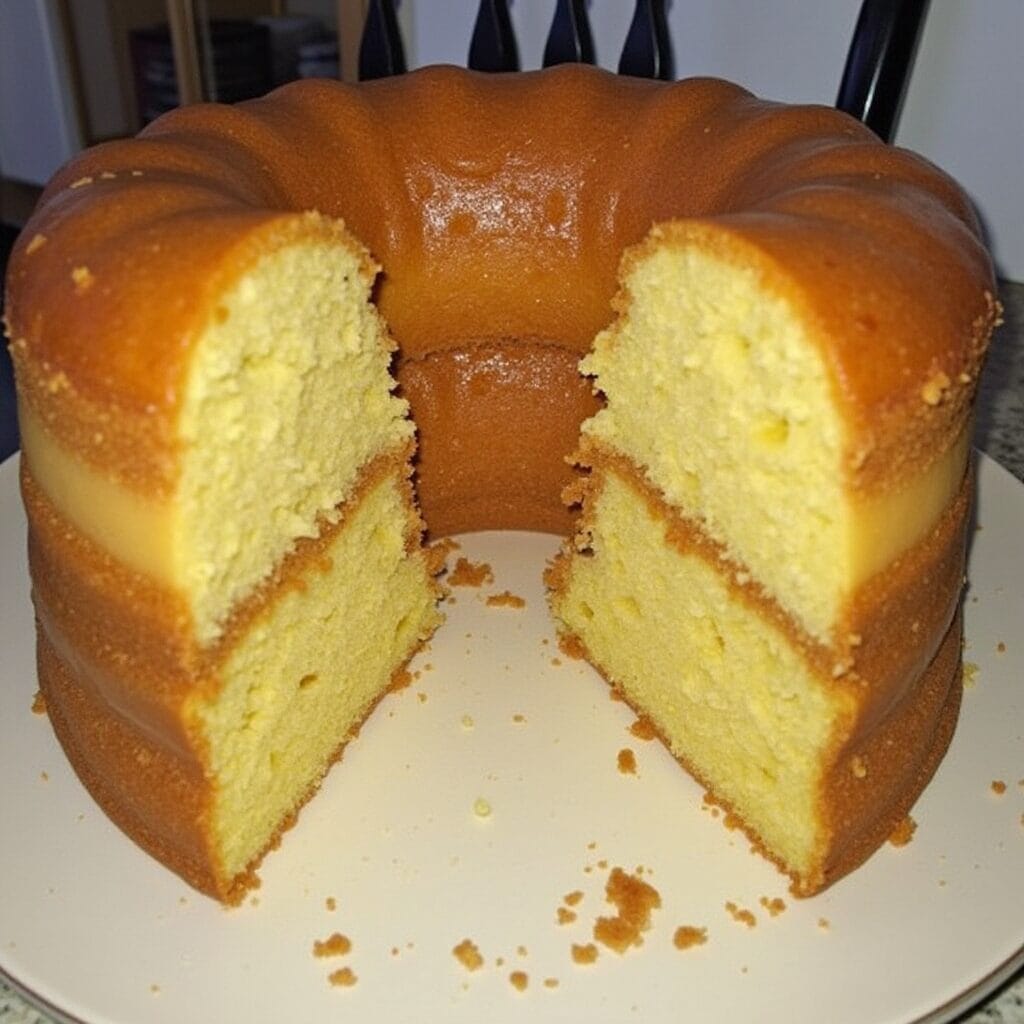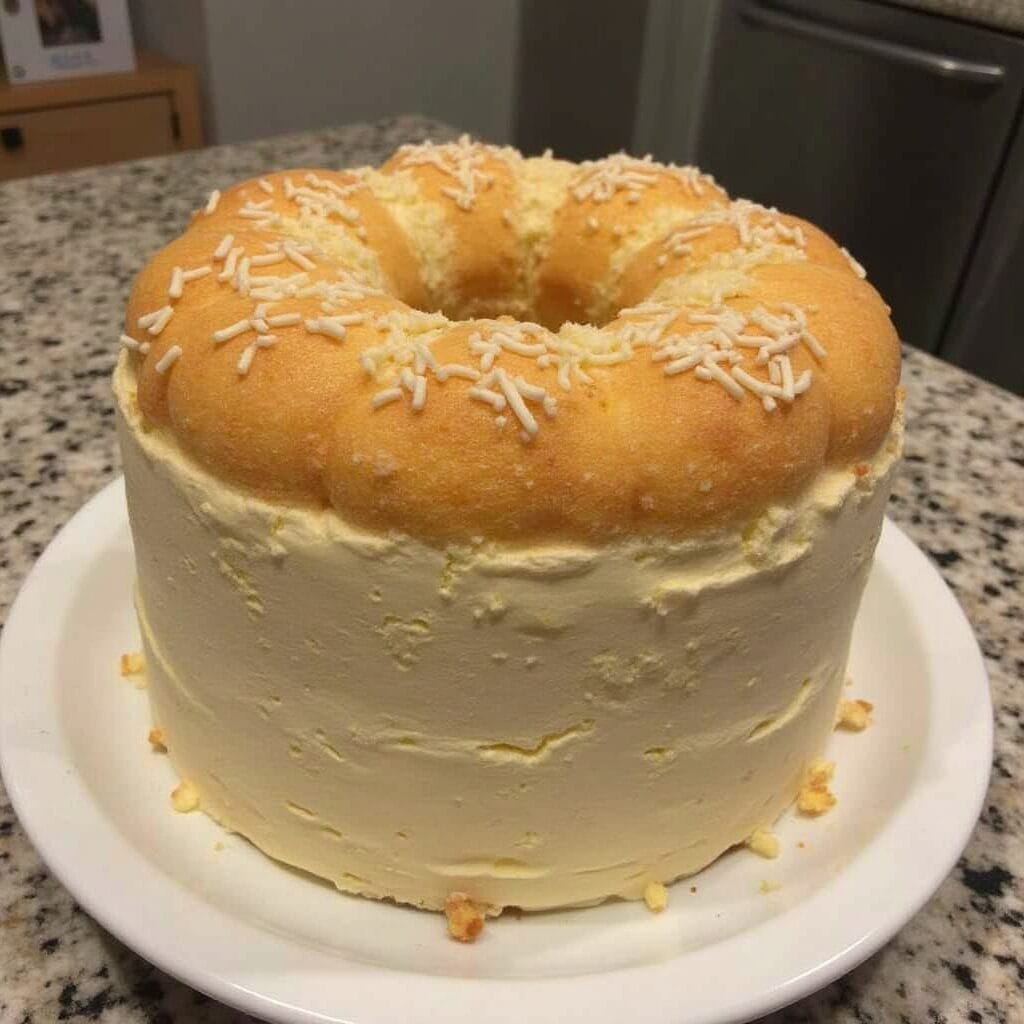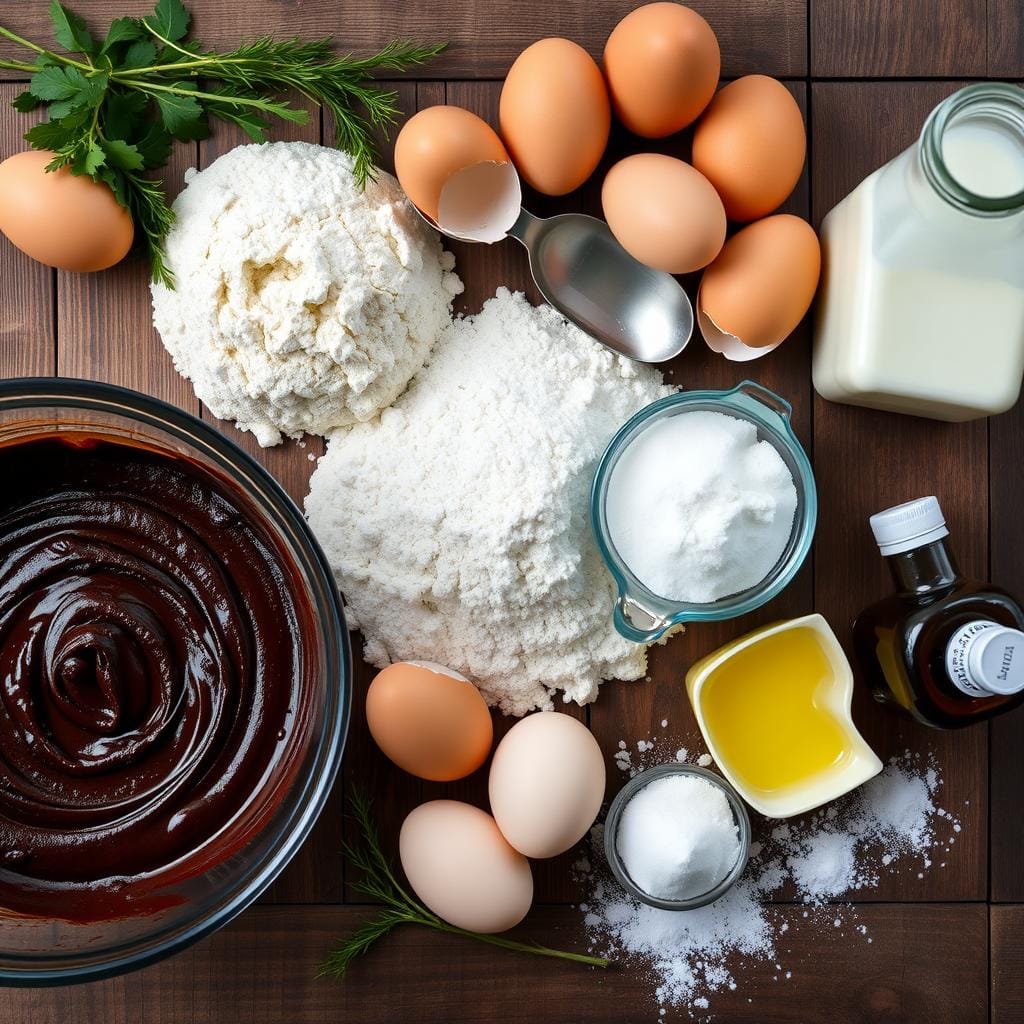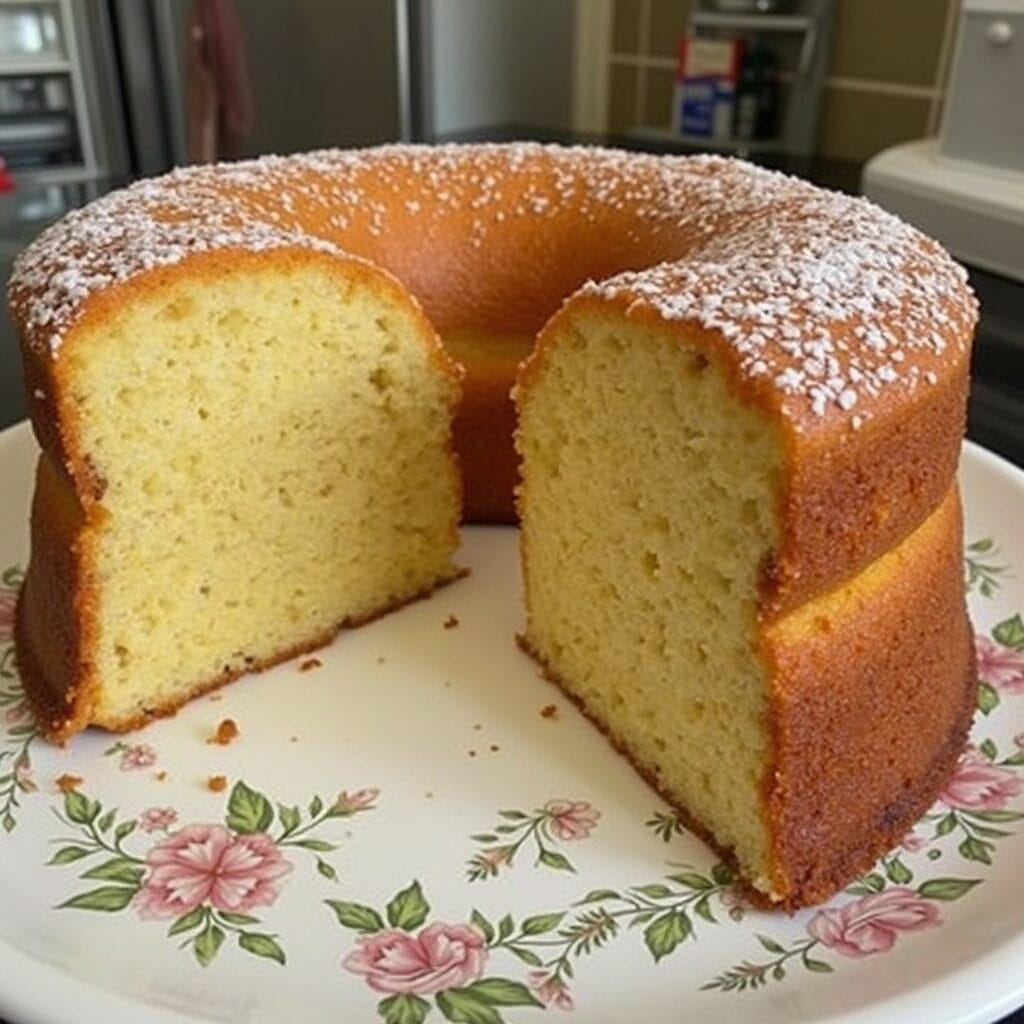What is the secret to super moist cake? Every baker has experienced the frustration of a dry cake. My first baking disaster was on a birthday—the cake was so dry, it felt like a sponge. That moment inspired me to master the art of baking moist, delicious cakes everyone loves.
Making a moist cake is not just luck. It’s a science that needs the right ingredients, techniques, and baking knowledge. Whether you’re new to baking or have been doing it for years, learning about cake moisture can make your baking amazing.
There’s more to baking a moist cake than just following a recipe. You need to know how each ingredient works together, how temperature changes texture, and the best techniques to keep it soft. Your journey to becoming a cake moisture expert starts here.

Key Takeaways
- Moisture is the key to exceptional cake texture
- Scientific understanding improves baking results
- Precise ingredient selection matters
- Technique is as important as recipe
- Anyone can learn to bake moist cakes with practice
Understanding the Science Behind Cake Moisture
Baking the perfect cake is more than just mixing ingredients. It’s a mix of chemistry and culinary art. The texture of your cake comes from how molecules interact, turning simple ingredients into a tasty treat.

When you look at cake ingredients and techniques, knowing the science is key. It helps you make cakes that are soft and moist. Let’s explore the molecular magic that makes cakes so irresistible.
Protein and Starch Dynamics
Proteins and starches are vital for keeping cake moist. Wheat flour has two important proteins:
- Glutenin: Provides structural strength
- Gliadin: Contributes to elasticity
These proteins work together during mixing. They create a network that holds moisture, making the cake tender.
Chemical Reactions During Baking
Baking sets off complex chemical changes that affect moisture. Important reactions include:
| Reaction | Moisture Impact |
|---|---|
| Protein Denaturation | Helps retain water molecules |
| Starch Gelatinization | Increases moisture absorption |
| Maillard Reaction | Develops rich flavor while preserving moisture |
Moisture Retention Principles
Keeping moisture in depends on how ingredients work together. Hydrophilic molecules like sugar and protein bind water. This stops it from evaporating during baking.
“The secret to a moist cake lies in understanding how ingredients communicate at a molecular level.” – Professional Baker’s Insight
By understanding these scientific principles, you can improve your baking. You’ll make cakes that are moist and delicious every time.
Essential Ingredients That Create Super Moist Cakes
To make a super moist cake, you need to know the right ingredients. Each one plays a key role in making the cake tender and delicious. Together, they turn your cake batter into something truly special.

The secret to a moist cake is in the ingredients you choose. Let’s look at the main ingredients that make a cake moist:
- Eggs: They help hold moisture and structure
- Oil: Makes the cake soft and tender
- Buttermilk: Adds a tangy flavor and tenderizes the cake
- Sour cream: Boosts moisture and richness
It’s important to know how these ingredients work together. Each one adds something special to the cake’s texture and taste.
| Ingredient | Moisture Impact | Recommended Quantity |
|---|---|---|
| Vegetable Oil | High moisture retention | 1/2 to 3/4 cup per cake |
| Buttermilk | Adds tenderness | 1 cup per standard cake |
| Sour Cream | Enhances richness | 1/2 to 3/4 cup |
“The art of baking is all about understanding how ingredients work together to create magic.” – Professional Baker
By balancing your cake batter and using top-quality ingredients, you can make a cake that’s moist and delicious. It will surely impress anyone who tries it.
What Is the Secret to Super Moist Cake?
Discovering the secret to a super moist cake is all about mastering some key baking tips and techniques. Whether you’re a home baker or a pastry chef in training, making a cake that’s tender and moist is an art. It’s a mix of science and skill.
Key Moisture-Adding Components
The secret to a super moist cake is in the ingredients. Professional bakers use special components to make an ordinary cake into a showstopper:
- Buttermilk or sour cream for tangy moisture
- Vegetable or olive oil instead of butter
- Fruit purees like applesauce or mashed bananas
- Extra egg yolks for rich texture
Professional Baker’s Special Techniques
Bakers use techniques that elevate your baking to the next level. These methods help keep the cake moist:
- Use room temperature ingredients
- Avoid overmixing the batter
- Brush cakes with simple syrup
- Measure ingredients precisely
Common Mistakes to Avoid
To avoid dry cakes, know the common mistakes. Steer clear of these moisture-killers:
| Mistake | Solution |
|---|---|
| Overbaking | Use toothpick test, remove cake when few crumbs remain |
| Wrong flour type | Use cake flour for softer texture |
| Incorrect measuring | Use weight measurements for accuracy |
“The difference between a good cake and a great cake is often just a few careful techniques.” – Professional Baker’s Wisdom
By following these professional baking tips and understanding moisture science, you’ll make cakes that are moist, delicious, and sure to wow.
The Perfect Balance of Wet and Dry Ingredients
Creating the perfect cake is all about mastering the right cake batter ratios. This ensures your cake is moist and has the right texture. It’s all about understanding how wet and dry ingredients mix together.
Professional bakers know that precision is key when mixing ingredients. Getting the wrong mix can result in cakes that are either too dry or too soggy.
“Baking is a science of exact measurements and careful techniques.” – Professional Baker’s Wisdom
- Flour provides structure
- Liquids create moisture
- Fats enhance tenderness
- Leavening agents create volume
Knowing how each ingredient works helps you improve your baking skills. Each part is important for the perfect cake texture.
| Ingredient Type | Moisture Impact | Recommended Ratio |
|---|---|---|
| Flour | Absorbs moisture | 50-60% of dry mix |
| Liquid (Milk/Water) | Adds hydration | 30-40% of wet ingredients |
| Fat (Butter/Oil) | Increases tenderness | 20-30% of total volume |
Pro tip: Always measure ingredients precisely for consistent results in your cake baking journey.
Role of Fats in Creating Tender Cake Crumb
Fats are key to making a cake that’s soft and melts in your mouth. They help create a moist crumb that bakers love. Knowing how fats work with other ingredients can make your baking amazing.
Essential Types of Fats for Baking
Not all fats are the same in baking. They can change your cake’s texture and taste:
- Butter: Rich flavor and lots of moisture
- Vegetable oil: Makes the cake very soft
- Shortening: Adds extra tenderness
- Cream cheese: Moisture and a tangy taste
Proper Fat Incorporation Techniques
How you mix fats is important for your cake’s texture. Bakers suggest:
- Make fats room temperature before mixing
- Cream butter and sugar until it’s light and fluffy
- Add eggs slowly to avoid curdling
- Mix at medium speed to avoid overworking
Temperature Considerations for Fat Performance
| Fat Type | Ideal Temperature | Texture Impact |
|---|---|---|
| Butter | 65-70°F | Creamy, rich texture |
| Oil | Room temperature | Ultra-soft crumb |
| Shortening | 60-65°F | Tender, light structure |
“The right fat at the right temperature can transform an average cake into a bakery-worthy masterpiece.” – Professional Pastry Chef
Knowing how fats work can make your cakes incredibly soft. Try different fats and methods to find your favorite moist cake crumb.
Sugar’s Impact on Cake Moisture Retention
Sugar is more than just sweet in cake making. It’s key to keeping cakes moist and soft. Knowing how sugar works with other ingredients can make your cakes moist every time.
Sugar holds onto water in cake recipes. Its structure keeps water from evaporating while baking. This makes your cake soft and tender.
“Sugar is not just a sweetener, but a moisture magician in baking.” – Professional Pastry Chef
How Sugar Impacts Cake Moisture
- Prevents protein coagulation in cake batter
- Slows down gluten development
- Creates a more tender cake crumb
- Helps maintain cake moisture for longer periods
Not all sugars are the same for cake moisture. Granulated sugar gives structure, while brown sugar adds moisture. Powdered sugar makes cakes very delicate.
Selecting the Right Sugar
| Sugar Type | Moisture Impact | Best Used In |
|---|---|---|
| Granulated Sugar | Moderate moisture retention | Basic layer cakes |
| Brown Sugar | High moisture retention | Dense, rich cakes |
| Powdered Sugar | Delicate moisture distribution | Lighter, softer cakes |
Mastering cake moisture is about understanding each ingredient’s role. Sugar is your secret to a cake that melts in your mouth. It’s what everyone loves.
Mixing Techniques for Optimal Moisture
Learning cake baking methods can make your baking amazing. The right mixing technique is key to a moist, tender cake. It will make your taste buds happy.
Professional bakers see recipe techniques as more than just steps. They understand the science behind cake batter ratios. They know how mixing methods affect the cake’s texture.
Creaming Method Magic
The creaming method is a classic that can make your cake moist and tender. Here’s how to do it right:
- Start with room temperature butter and sugar
- Beat until the mixture becomes light and fluffy
- Add eggs one at a time, fully incorporating each
- Gently fold in dry ingredients to maintain air bubbles
Reverse Creaming Technique
This innovative approach flips traditional mixing on its head. With reverse creaming:
- Mix dry ingredients first
- Add softened butter to create a sandy texture
- Gradually incorporate wet ingredients
| Mixing Method | Texture Result | Moisture Level |
|---|---|---|
| Traditional Creaming | Light, Airy | Moderate |
| Reverse Creaming | Dense, Tender | High |
Folding Techniques for Perfect Texture
Gentle folding is an art in cake baking. Use a spatula to carefully incorporate ingredients. This keeps the delicate air bubbles that make your cake light.
“Mixing is not just about combining ingredients, it’s about creating magic in your kitchen.” – Professional Baker’s Wisdom
By learning these cake baking methods, you’ll make moist and delicious cakes. They will impress everyone at the table.
Proper Baking Temperature and Timing
Mastering cake baking needs precise temperature and timing. Your oven’s temperature greatly affects the cake’s softness. Professional bakers say even a few degrees can change the cake’s outcome.
It’s key to know your oven’s quirks for good baking. Not all ovens heat the same. Using an internal oven thermometer helps get accurate readings.
“Temperature is the silent hero of cake baking – get it right, and your cake will thank you.” – Professional Pastry Chef
- Preheat your oven 15-20 minutes before baking
- Use the center rack for most even heat distribution
- Avoid opening the oven door frequently during baking
- Check cake doneness with a toothpick test
Different cakes need specific temperatures. Here’s a quick guide for the best baking temperatures:
| Cake Type | Temperature (°F) | Approximate Baking Time |
|---|---|---|
| Vanilla Sponge | 350°F | 25-30 minutes |
| Chocolate Layer Cake | 325°F | 30-35 minutes |
| Pound Cake | 325°F | 60-75 minutes |
Baking is both art and science. Try these tips and adjust for your oven and recipe. The secret is patience and practice for that perfect, moist cake.
Storage Methods to Maintain Cake Moisture
Keeping your cake moist after baking is all about the right storage. Knowing how to keep your cake fresh can greatly improve its taste and quality.
Storing your cake properly is key to keeping it moist. It prevents your cake from drying out too fast. The best storage method depends on the cake type and how long you plan to keep it.
Short-Term Storage Solutions
For cakes you’ll eat in 2-3 days, follow these tips:
- Store at room temperature in an airtight container
- Use plastic wrap to cover cut surfaces
- Keep away from direct sunlight and heat sources
Long-Term Preservation Methods
For longer storage, refrigeration is a must. Here’s how to keep your cake moist for a long time:
| Storage Method | Duration | Moisture Retention |
|---|---|---|
| Refrigerator (Wrapped) | 1 Week | High |
| Freezer (Properly Sealed) | 2-3 Months | Excellent |
Proper Wrapping Techniques
Wrapping your cake right is crucial for moisture. Wrap cakes tightly in plastic wrap, then in aluminum foil to prevent freezer burn and moisture loss. This keeps your cake’s texture and flavor intact.
“A well-wrapped cake is a delicious cake that stays fresh longer!” – Professional Baker’s Secret
By using these storage tips, your cakes will stay moist and delicious. They’ll be ready to impress whenever you need them.
Alternative Ingredients for Extra Moisture
Exploring unique cake ingredients can change your baking. It makes your cakes incredibly moist. Professional bakers use special ingredients to make ordinary cakes into amazing desserts.
- Greek yogurt: Adds tanginess and incredible moisture
- Applesauce: Natural sweetener that reduces fat content
- Sour cream: Creates rich, tender cake texture
- Buttermilk: Provides subtle acidity and softness
- Fruit purees: Enhances flavor and moisture simultaneously
It’s important to know how these ingredients work with your cake. Each one has special properties that can change your baking.
“The secret to a perfect cake isn’t just in the recipe, but in understanding how ingredients work together.” – Professional Baker’s Wisdom
To use these ingredients, start by replacing some of the liquid in your recipe. You can replace 1/4 to 1/2 cup of liquid with your chosen ingredient.
| Ingredient | Moisture Level | Flavor Impact |
|---|---|---|
| Greek Yogurt | High | Tangy |
| Applesauce | Medium | Sweet |
| Sour Cream | Very High | Rich |
| Buttermilk | High | Subtle |
Pro tip: Always adjust your baking time and temperature when experimenting with alternative moisture ingredients to prevent over or underbaking.
Troubleshooting Common Moisture Issues
Getting the right cake moisture can be tough, even for pros. Knowing common baking tips helps fix texture problems fast. Cake moisture depends on many factors that can affect your baking.
When your cake is dry or gummy, several methods can help find the problem:
- Overmixing batter can develop excess gluten, creating a tough texture
- Inaccurate oven temperature leads to uneven baking
- Measuring ingredients imprecisely disrupts moisture balance
- Using room temperature ingredients ensures better cake moisture
Key troubleshooting strategies include:
- Check ingredient proportions
- Verify oven calibration
- Use digital scale for precise measurements
- Adjust mixing techniques
“Perfect cake moisture is a delicate science of precision and technique.” – Professional Pastry Chef
| Problem | Potential Cause | Solution |
|---|---|---|
| Dry Cake | Overbaking | Reduce baking time, use moisture-rich ingredients |
| Gummy Texture | Overmixing | Mix until ingredients are just combined |
| Uneven Baking | Incorrect oven temperature | Use oven thermometer, rotate pan midway |
Professional bakers know that understanding cake baking methods is key to consistent, moist results.
Conclusion
Making a super moist cake is more than just a recipe. It’s about understanding how to keep it moist and mastering baking skills. Every step, from picking the right ingredients to mixing, is important for a cake that’s soft, rich, and moist.
The secret to a great moist cake is balancing wet and dry ingredients. Knowing how fats work and using the right baking tips helps a lot. Temperature, ingredient quality, and mixing techniques make a big difference. Remember, practice and trying new things help you get better at making cakes moist.
Keep improving your baking skills and don’t be shy to try new things. Every cake you make helps you learn more about keeping it moist. With patience and focus, you’ll make cakes that everyone will love.
Your success in baking comes from using professional techniques and staying curious. Keep learning, stay excited, and enjoy the journey to becoming a great baker.

